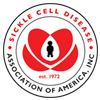Trusted Resources: Evidence & Education
Scientific literature and patient education texts
A multicenter randomized controlled trial of intravenous magnesium for sickle cell pain crisis in children
source: Blood
year: 2015
authors: David C. Brousseau, J. Paul Scott, Oluwakemi Badaki-Makun, Deepika S. Darbari, Corrie E. Chumpitazi, Gladstone E. Airewele, Angela M. Ellison, Kim Smith-Whitley, Prashant Mahajan, Sharada A. Sarnaik, T. Charles Casper, Lawrence J. Cook, J. Michael Dean, Julie Leonard, Monica L. Hulbert, Elizabeth C. Powell, Robert I. Liem, Robert Hickey, Lakshmanan Krishnamurti, Cheryl A. Hillery, Mark Nimmer and Julie A. Panepinto
summary/abstract:Magnesium, a vasodilator, anti-inflammatory, and pain reliever, could alter the pathophysiology of sickle cell pain crises. We hypothesized that intravenous magnesium would shorten length of stay, decrease opioid use, and improve health-related quality of life (HRQL) for pediatric patients hospitalized with sickle cell pain crises. The Magnesium for Children in Crisis (MAGiC) study was a randomized, double-blind, placebo-controlled trial of intravenous magnesium vs normal saline placebo conducted at 8 sites within the Pediatric Emergency Care Applied Research Network (PECARN). Children 4 to 21 years old with hemoglobin SS or Sβ(0) thalassemia requiring hospitalization for pain were eligible. Children received 40 mg/kg of magnesium or placebo every 8 hours for up to 6 doses plus standard therapy. The primary outcome was length of stay in hours from the time of first study drug infusion, compared using a Van Elteren test. Secondary outcomes included opioid use and HRQL. Of 208 children enrolled, 204 received the study drug (101 magnesium, 103 placebo). Between-group demographics and prerandomization treatment were similar. The median interquartile range (IQR) length of stay was 56.0 (27.0-109.0) hours for magnesium vs 47.0 (24.0-99.0) hours for placebo (P = .24). Magnesium patients received 1.46 mg/kg morphine equivalents vs 1.28 mg/kg for placebo (P = .12). Changes in HRQL before discharge and 1 week after discharge were similar (P > .05 for all comparisons). The addition of intravenous magnesium did not shorten length of stay, reduce opioid use, or improve quality of life in children hospitalized for sickle cell pain crisis. This trial was registered at www.clinicaltrials.gov as #NCT01197417.
organization: Medical College of Wisconsin and the Children's Research Institute, Milwaukee; Oncology/Blood Research Institute Milwaukee; Johns Hopkins University, Baltimore; Children's National Medical Center, Washington, DC; Baylor College of Medicine; Children's Hospital of Philadelphia; Wayne State University,Detroit; University of Utah; Nationwide Children's Hospital; Washington University School of Medicine; Ann & Robert H. Lurie Children's Hospital of Chicago; Children's Hospital of Pittsburgh of University of Pittsburgh Medical Cente; Aflac Cancer and Blood Disorders Center, Emory University School of Medicine,AtlantaDOI: 10.1182/blood-2015-05-647107
read more full text
Related Content
-
Siklos®, the first and only hydroxyurea-based treatment for pediatric patients with sickle cell anemia, now availab...Medunik USA, a company dedicated to impr...
-
SCDAA Statement About Gene Therapy ApprovalOn Dec. 8, 2023, the Food and Drug Admin...
-
The first two years of life in sickle cell anemia infants: A results of a comprehensive longitudinal studyInfancy is a critical time during which ...
-
HydroxyureaHydroxyurea (Hydrea) is used alone or wi...
-
Gene therapy may help cure sickle cell disease, study saysA gene therapy that could provide a perm...
-
Today’s Faces of Sickle Cell Disease: Courtney Fitzhugh, M.D.Courtney Fitzhugh first became intereste...
-
Pioneering a New Therapy for Sickle Cell DiseaseThe science behind sickle cell disease (...
To improve your experience on this site, we use cookies. This includes cookies essential for the basic functioning of our website, cookies for analytics purposes, and cookies enabling us to personalize site content. By clicking on 'Accept' or any content on this site, you agree that cookies can be placed. You may adjust your browser's cookie settings to suit your preferences. More Information
The cookie settings on this website are set to "allow cookies" to give you the best browsing experience possible. If you continue to use this website without changing your cookie settings or you click "Accept" below then you are consenting to this.




 +myBinder
+myBinder
